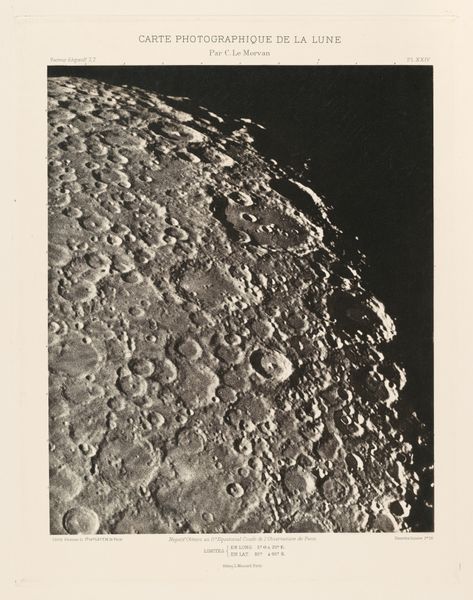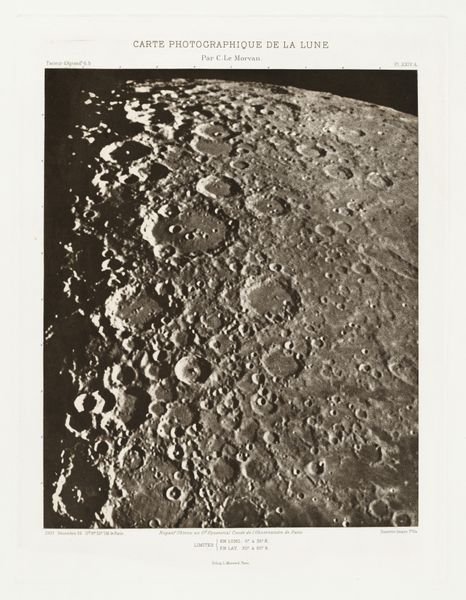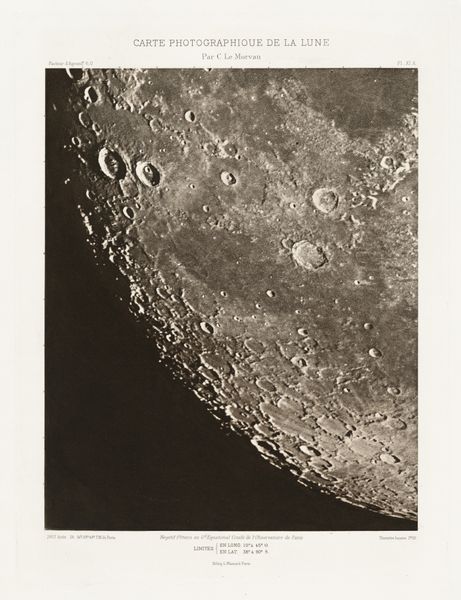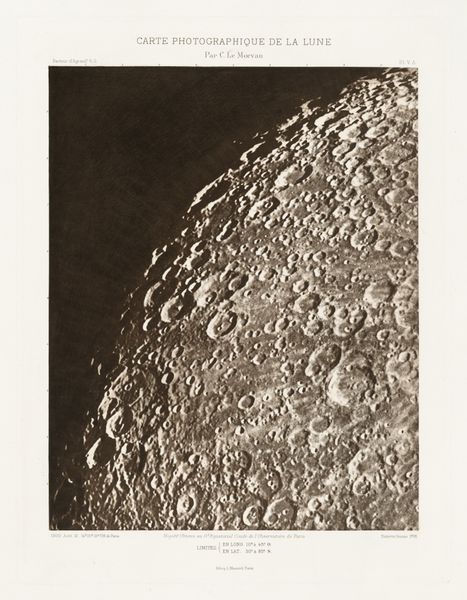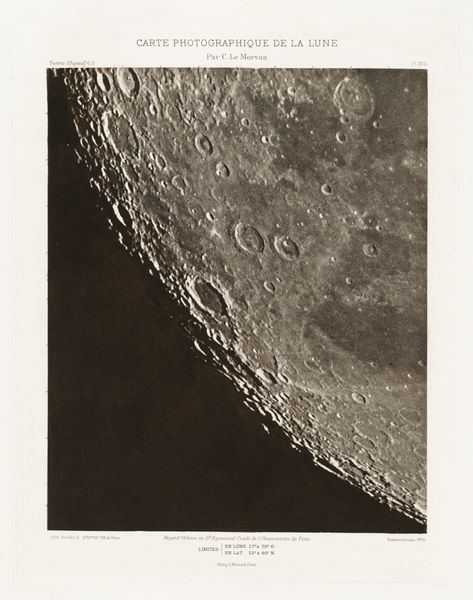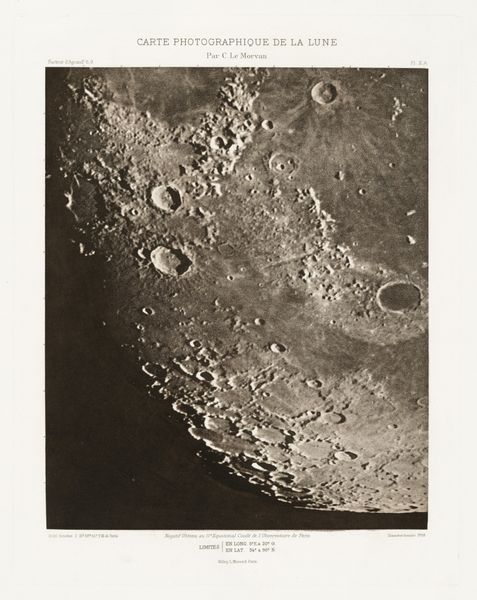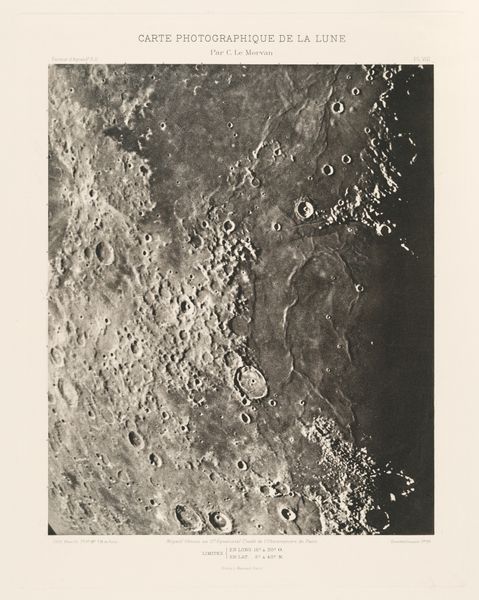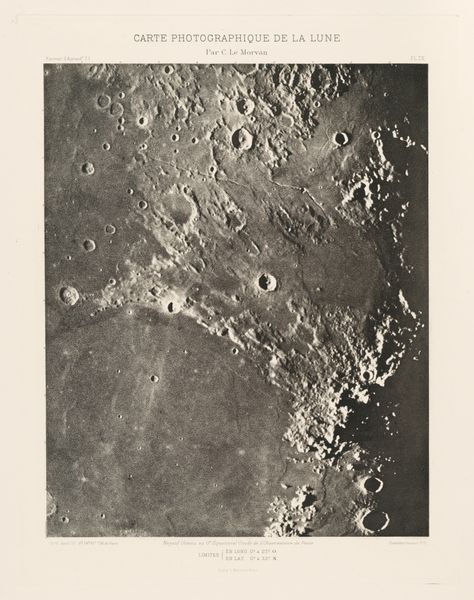
Carte photographique de la lune, planche IV (Photographic Chart of the Moon, plate IV) Possibly 1909 - 1914
0:00
0:00
print, photography
# print
#
landscape
#
photography
#
geometric
Dimensions: image: 31.1 × 25.5 cm (12 1/4 × 10 1/16 in.) plate: 38.9 × 29.5 cm (15 5/16 × 11 5/8 in.) sheet: 49 × 37.9 cm (19 5/16 × 14 15/16 in.) tissue: 42.55 × 37.47 cm (16 3/4 × 14 3/4 in.)
Copyright: National Gallery of Art: CC0 1.0
Editor: Here we have Charles Le Morvan’s “Carte photographique de la lune, planche IV,” likely from between 1909 and 1914. It's a photographic print capturing a section of the moon’s surface, filled with craters. The stark contrast really emphasizes the texture. What strikes you about this piece? Curator: The materiality of this print is really interesting when we consider its content. Think about the social context; scientific advancement was rapidly progressing, and this image is born from that. The laborious process of capturing and reproducing such detail on a print meant this object served not just as scientific data, but as a potent symbol of human progress through material means. Editor: So, the print itself becomes part of the message? It’s not just the image, but how it was made and disseminated? Curator: Precisely. It’s easy to look at this and see "just" a photograph, but let's look closer at the economics and the labor involved. Where was this printed? Who were the consumers? Photography, like other new technologies, radically changed both production and consumption practices. Editor: I guess I hadn’t thought about it in terms of consumerism. Curator: Consider the contrast between the supposed sublime nature of outer space and the grounded, commercial reality of its depiction. How did people consume such images? As scientific data, artistic wonder, or perhaps a bit of both? What’s especially key for me is this challenges us to see both high and low, fine art and scientific data, all entangled. Editor: That makes me look at the image in a totally new light. It's fascinating to consider it not just as a picture, but as a product of its time, with its own social and economic story to tell. Thanks! Curator: Indeed! Thinking about the labor and materials involved deepens our understanding of the work's cultural significance and overall material impact on its time.
Comments
No comments
Be the first to comment and join the conversation on the ultimate creative platform.
